Buona Pasqua!
For so many Italians and Italian-Americans, this is a very special weekend. No matter if you're enjoying roasted lamb with fresh mint, a hulking honey-glazed ham, a bevy of Easter eggs, pastiera di grano, jelly beans or chocolate bunnies, the sheer cornucopia of Easter foods and offerings is amazing.
For many, though, the Colomba di Pasqua — a light-as-air, sweet-but-not-too-sweet, aromatic, dove-shaped cake — is the centerpiece of the whole shebang. And for good reason!
In order to delve into the specifics of the iconic Italian classic, I spoke with Nicola Olivieri, owner of Veneto-based bakery Olivieri 1882, which has been making the cake for over 140 (!) years.
The following interview was translated from Italian to English, and has been lightly edited for clarity and length.
What is the history of the Colomba di Pasqua throughout Italy?
There are various theories throughout Italy on the origins of the Easter Colomba. In my home region of Veneto, the story goes that the Colomba recipe descended from fugassa veneta, also known as focaccia veneta. Fugassa is a traditional Easter yeasted cake far more rustic than the Colomba, a dolce dei poveri. To celebrate Easter Sunday, families would splurge once a year and bake a cake using bread dough and then gussy it up with sugar, butter and eggs (at the time expensive ingredients). Over time, this sweet evolved into the Colomba, a dove-shaped yeasted cake rich in vanilla, butter and candied orange, topped with a pearl sugar and almond glaze. Then, there's the popular legend that says the Colomba was brought as a gift to King Alboin following the conquest of Pavia on the day of Pasqua in 572 AD and proved so delicious that he freed his captives and declared the dove — and the cake — a symbol of peace and renewal. Some believe that the Colomba is an offshoot of panettone as it's similar in style, panettone's springtime counterpart.
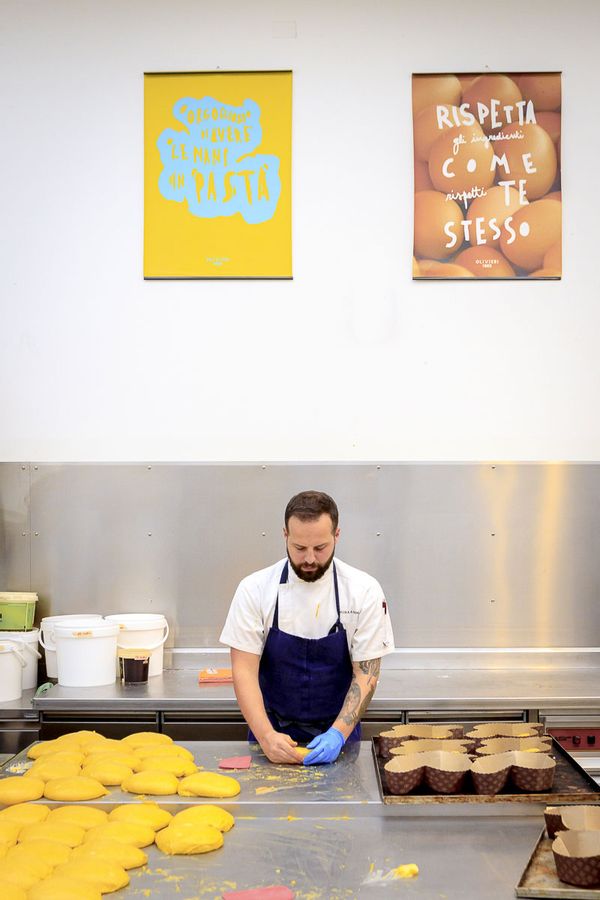 6th-generation/current head baker and owner Nicola Olivieri at work in the laboratorio producing colombe (Courtesy of Olivieri 1882)
6th-generation/current head baker and owner Nicola Olivieri at work in the laboratorio producing colombe (Courtesy of Olivieri 1882)
Can you tell me a bit about the production process for the Colomba di Pasqua? I know it's incredibly involved and time consuming.
It is a yeasted bread that involves two doughs and a long, natural fermentation. In the case of our bakery, Olivieri 1882, each Colomba batch takes a total of four days to produce from start to finish. We begin with the care and keeping of the mother yeast or starter, which is refreshed daily and attended to meticulously. In the evening we will start with the first dough and when it's complete we let it leaven and rise overnight. The following morning, we will add more butter, eggs and flour and begin to shape our dough. Most producers will let their dough rise and then immediately glaze and bake them; we wait an additional night before glazing and baking our Colomba cakes. Once they are baked, we then hang them upside down overnight so the cakes don't cave in or sink in the middle. After all of this, the Colomba is ready to be packaged and purchased for Easter.
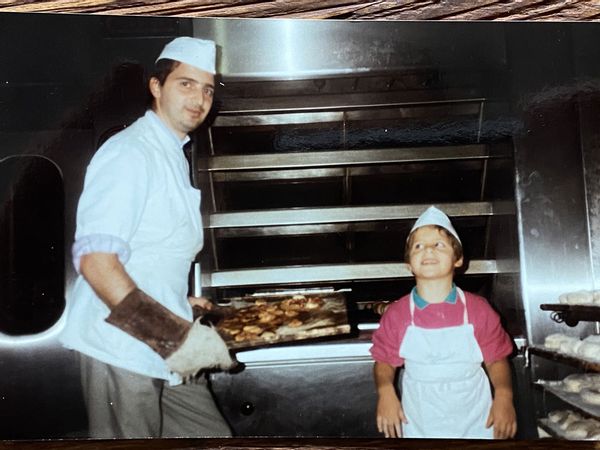 Nicola as a child with his father Oliviero Olivieri (Courtesy of Olivieri 1882)
Nicola as a child with his father Oliviero Olivieri (Courtesy of Olivieri 1882)
What are the ingredients in a traditional Colomba di Pasqua vs. your signature version?
Our version contains four times more eggs than the average Colomba recipe, which gives it a lovely richness and bright yellow color. In our "Ricetta Storica — Colomba Classica," or historical recipe, we also add candied orange paste in place of chopped, candied orange. This is a nod to the focaccia veneta mentioned above, a Colomba cake that is closer to what my grandparents would have made.
Want more great food writing and recipes? Subscribe to Salon Food's newsletter, The Bite.
For those who think of bunnies, jelly beans and Peeps before Colomba di Pasqua when it comes to Easter foods, what can you say about the legacy and iconic stature about Colomba di Pasqua for Italians and Italian-Americans?
For us Italians, the Colomba cake represents spring, the arrival of blue skies and sunshine and time with family and friends. The Colomba for me conjures up a peaceful Easter Sunday with my family and kids or perhaps a picnic in the countryside on Pasquetta (Easter Monday). It is the center of the Easter table from North to South.
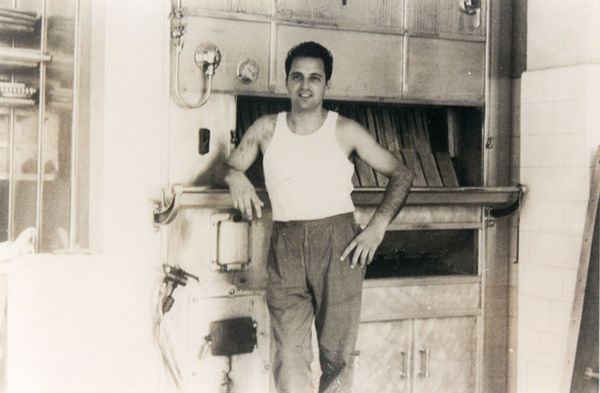 Bianco Olivieri, Nicola's grandfather (Courtesy of Olivieri 1882)What other types or flavors of Colomba di Pasqua do you sell?
Bianco Olivieri, Nicola's grandfather (Courtesy of Olivieri 1882)What other types or flavors of Colomba di Pasqua do you sell?
Along with the Colomba Classica or traditional recipe, we also offer nine other flavors. Besides the classic, our best sellers are Triple Chocolate and Apricot and Salted Caramel. This year, my "muse" is Italian citrus: Brand new 2023 entries include Lemon and Vanilla; Orange, Tangerine and Cardamom; and Sour Cherry, Lemon and Pistachio.
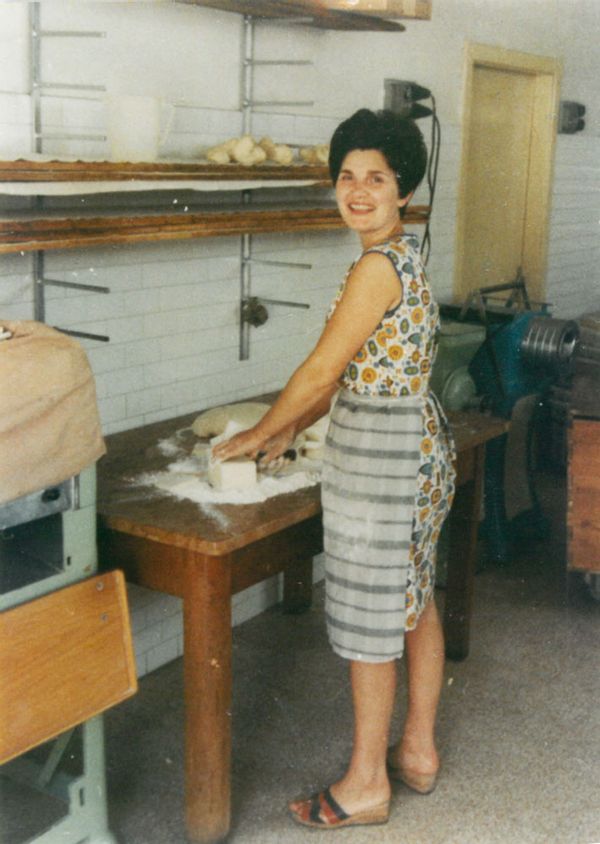 Nicola's grandmother, Nonna Miranda (Courtesy of Olivieri 1882)
Nicola's grandmother, Nonna Miranda (Courtesy of Olivieri 1882)
Is a Colomba di Pasqua similar to Pastiera Di Grano, another classic Italian Easter dessert classic?
The Pastiera is very different; its prep is far more low maintenance. It's a baked cake, not yeasted like the Colomba. But, they are similar in that they are both beloved Easter sweets in Italy (the Pastiera is an Easter staple in the southern region of Campania specifically).
What is the meaning or symbolism of the dove shape?
The dove shape is a symbol of peace and inextricably linked to Easter symbolism.


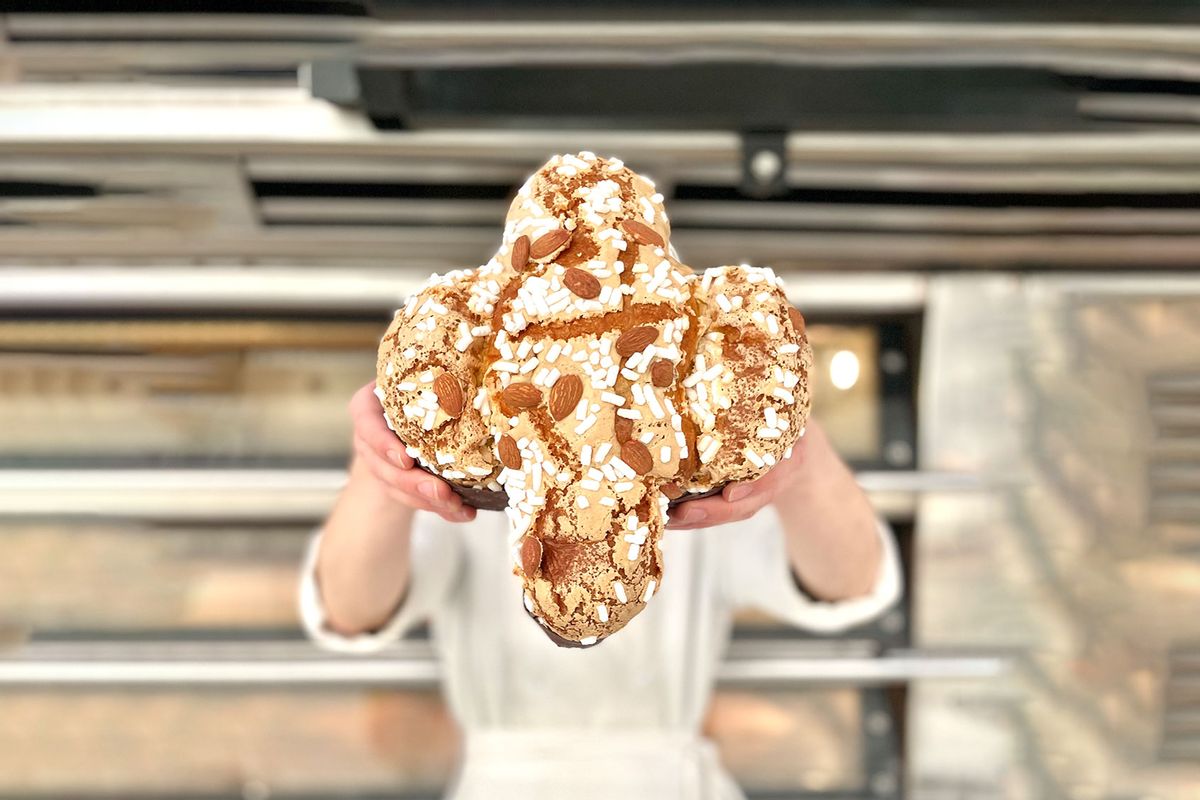
Shares